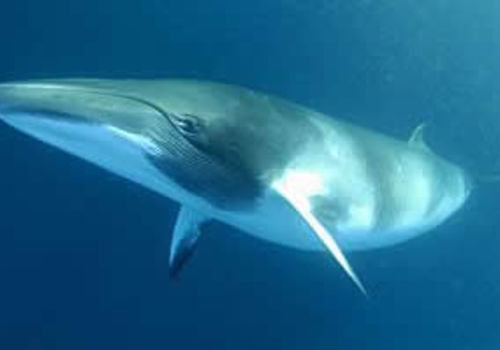
Minke whale
Balaenoptera acutorostrataMinke whale
Introduction: The minke whale (Balaenoptera acutorostrata), a Norwegian name, is part of the rorquals, a family that includes the humpback whale, fin whale, Bryde's whale, sei whale and the blue whale. They are an inquisitive species and often 'human watch'. Their distribution is believed to be widespread as they were not regularly hunted by the larger whaling companies because of their relatively small size. Only the pygmy sperm whale is smaller. They are commonly found in the open seas and can stay submerged for as long as 20 min.
In November 2007, a minke whale ran aground on a sandbar in the Amazon jungle, some 1,600km from the ocean! It was 5.5m long and weighed about 11 tonnes (12 short tons). It beached near Santarém in Pará state, according to Brazil's Environmental Protection Agency. The corpse was discovered the following week by curious locals.
Distribution: A slow swimming whale, that visits the coastline of Namibia
Diet: Krill and small fish
Colouring: The dorsal surface of the head, flippers, body and flukes are dark grey/blue and are paler on the sides. They have a white belly, throat and undersides.
Breeding: Mating occurs between August and September. Calves are born in late May to early June and are 2.8m in length. They are suckled for 6 months.
Size: Females are slightly larger than males and grow to 10.5m in length
Klein Windhoek

